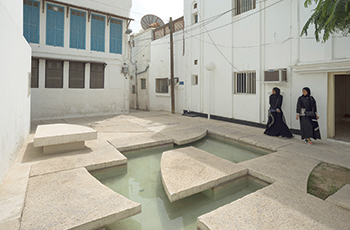GCC projects shortlisted for Aga Khan Award
01 May 2019
Six developments in the GCC region are among 20 shortlisted projects for the 2019 Aga Khan Award for Architecture that were announced last month in Kazan, Republic of Tatarstan in Russia, at an exhibition on the awards. These include Bahrain’s Revitalisation of Muharraq, Oman’s Muttrah Fish Market in Muscat, Qatar’s Msheireb Museums in Doha, as well as three projects in the UAE – Concrete at Alserkal Avenue, in Dubai, and Al Mureijah Art Spaces and Wasit Wetland Centre, both in Sharjah.
The shortlisted projects, which are located in 16 different countries, will compete for $1 million in prize money.
In January, an independent master jury reviewed hundreds of nominations. The 20 shortlisted projects are now undergoing rigorous investigations by a team of experts who will visit and evaluate each project onsite.
Their reports are the basis for the master jury’s selection of the eventual laureates. To be eligible for consideration in the 2019 Award cycle, projects had to be completed between January 1, 2012 and December 31, 2017, and should have been in use for at least one year.
Providing details on the GCC projects, the organiser states:
• Revitalisation of Muharraq offers testimony on the pearl trade in the Arabian Peninsula over the centuries, especially when Bahrain thrived during the 19th century;
• Muttrah Fish Market in Muscat highlights the region’s trade and fishing traditions while also catering to Oman’s growing tourism industry;
• Msheireb Museums in the Qatari capital incorporates four historic courtyard houses dating from the early 20th century that together comprise an element of the cultural development of downtown Doha;
• Concrete at Alserkal Avenue in Dubai is the major element of a former industrial complex that has been transformed into a cultural hub;
• Al Mureijah Art Spaces in Sharjah has involved the renovation of five dilapidated buildings that offered the perfect urban and architectural setting for a contemporary art venue; and
• Wasit Wetland Centre, also in Sharjah, transforms a wasteland into a wetland and functions as a catalyst for biodiversity and environmental education.
- Trio of expos draws quality audience
- Expo 2020 to contribute $33bn to UAE economy
- GCC projects shortlisted for Aga Khan Award
- HardwareTools to feature welding contest
- Digitalisation focus at Procurement Middle East



